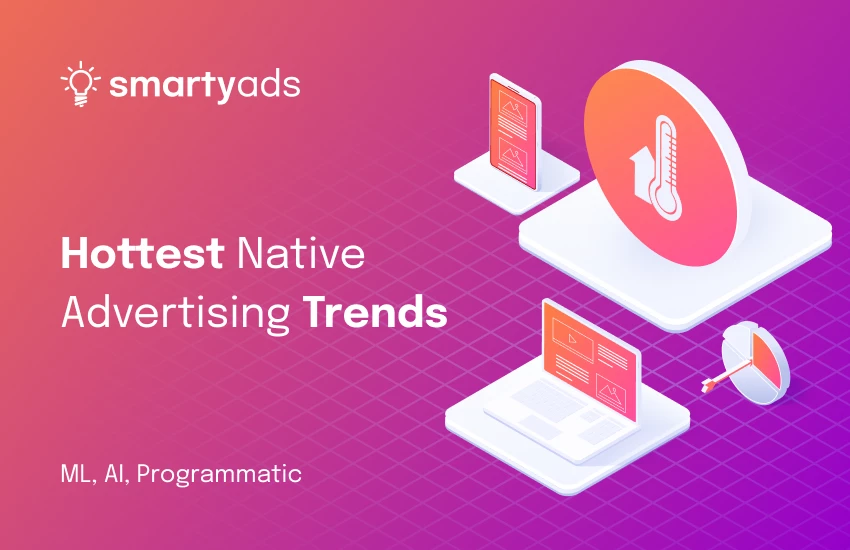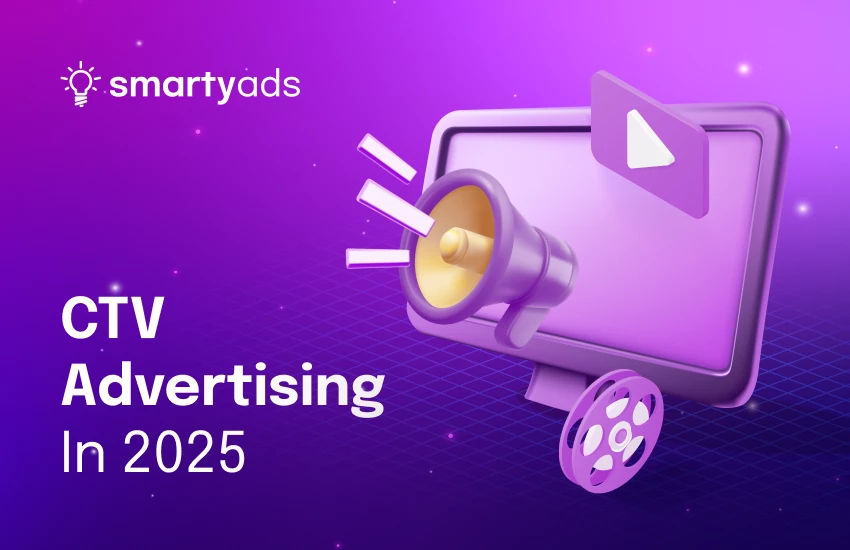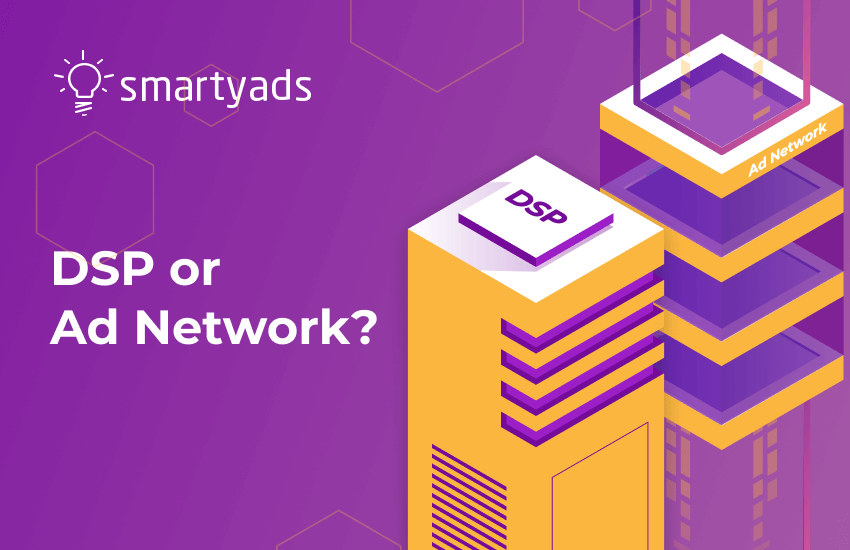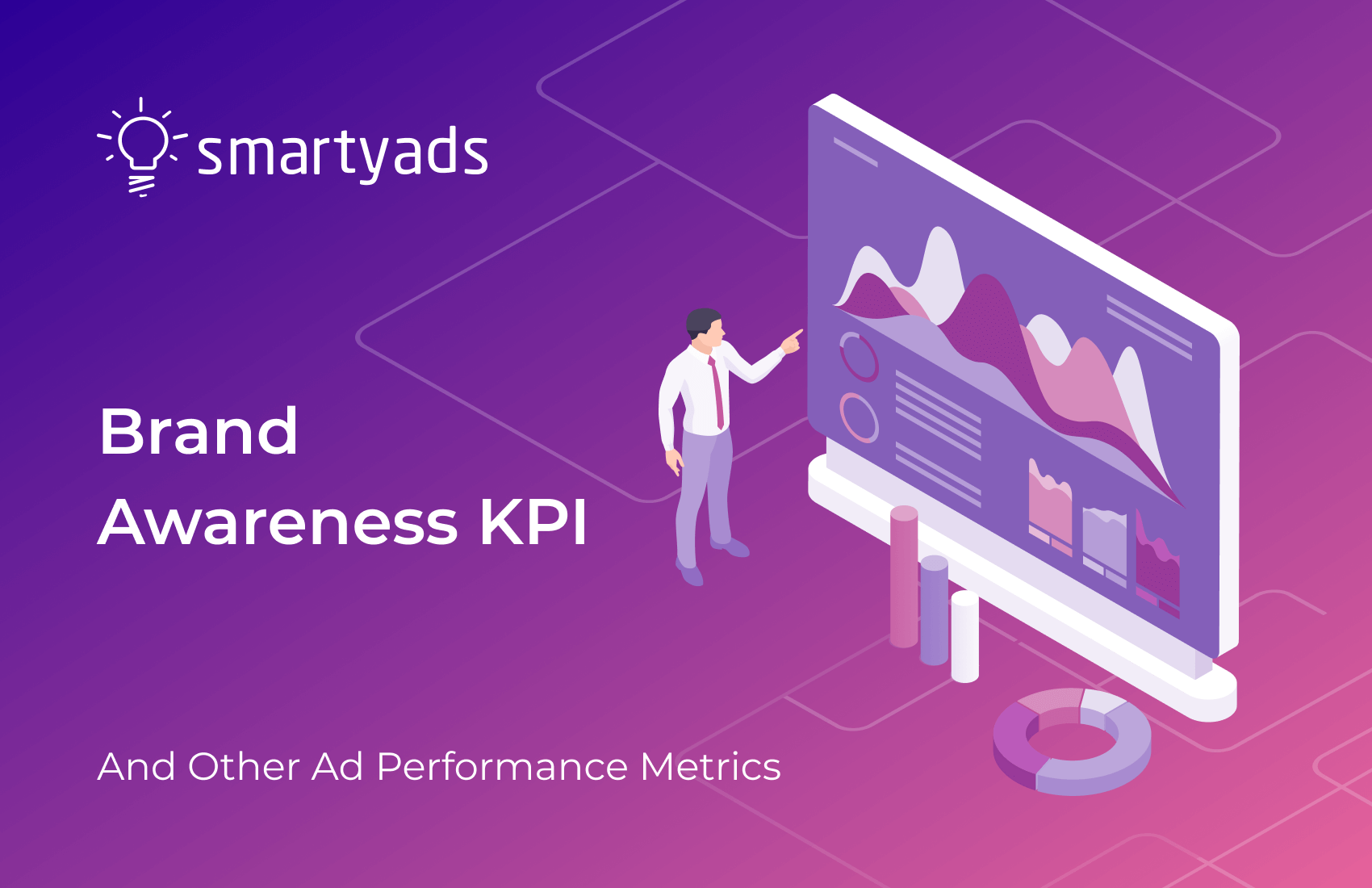Traditional ad methods like banners and TV commercials are still in play, but their effectiveness can be a moving target, influenced by many factors. Consumers today have become savvy at spotting ads, often tuning them out like background noise. Think of those banner ad formats on websites – they’re like billboards on a highway. You see them, but do you really see them?
To adapt to this shift, another kind of advertising has emerged—native advertising. Whether it’s a sponsored article that feels like a news story or a social media post that reads like a recommendation from a friend, native ads are designed to feel natural. Because of this, people are more likely to engage with them, as they don’t trigger the usual “ad fatigue.”
Since they first popped up on the scene, we witnessed a real boom – the variety of formats and ad sizes have captured digital marketing in a landslide. So, what changes to native ads will we have in 2025?

Native advertising trends in 2025
As we move further into 2025, these ads keep evolving, adapting to an ever-changing digital landscape. Advertisers are embracing novel methods to capture the attention of savvy users, with trends such as the rise of video content, the integration of Artificial Intelligence, Machine Learning in RTB, and the use of sophisticated programmatic algorithms. Still, that’s not all! Time to review these trends one by one.
Omnichannel reach
Since native advertising is at the core of pretty much every marketing and advertising strategy, it can be easily adapted to any omnichannel strategy, where it performs very well. Omnichannel reach is a top-of-mind thing for many marketers and businesses in 2025; why? Because of the ever-growing number of ways of communicating—while only a decade ago, content was primarily consumed via TV screens, now people embrace social media, CTV, messengers, PCs, mobile phones, and more channels where ads can appear.
What insight advertisers should draw at this point is that native ad units need to be adaptable to every selected channel. This also means that the messaging should be unified across these channels to achieve a unified look and, thus, a desired impact. Make sure your ads blend naturally with the surrounding content, maintaining an organic feel so users engage without feeling interrupted.
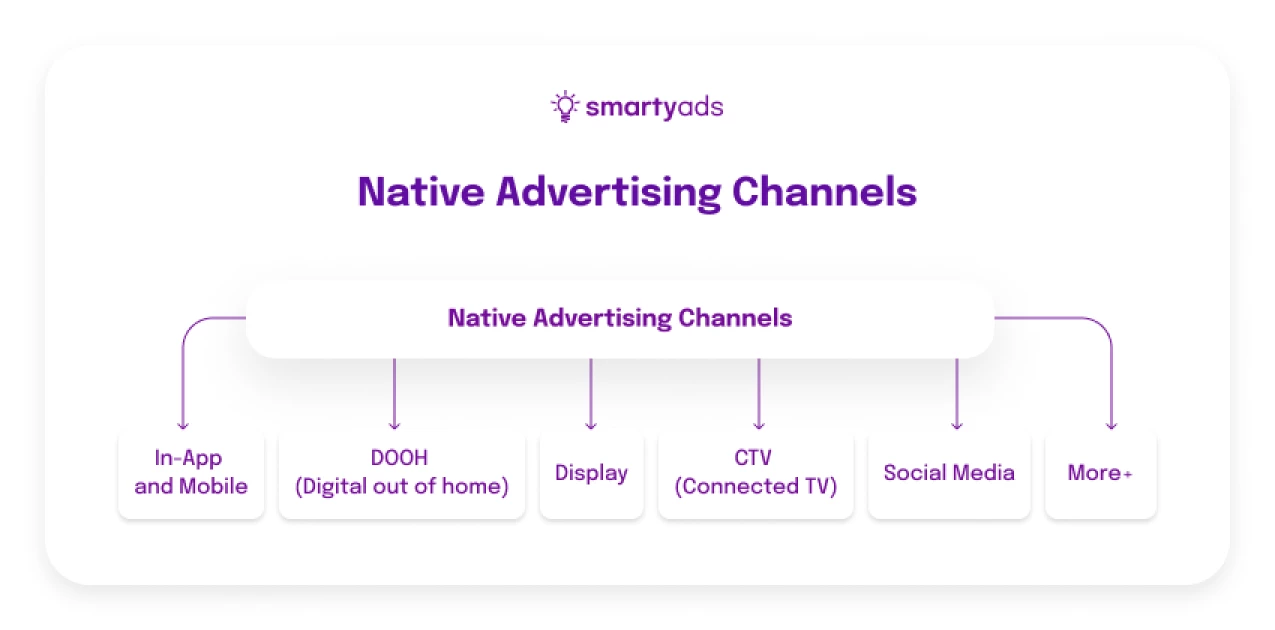
Programmatic native advertising and mobile
Both advertisers and publishers now use a great variety of ad types and platforms when using native ad formats. Media buyers and media sellers globally have welcomed native programmatic buying thanks to a powerful combination of great content, extended reach, outstanding efficiency, and brand safety.
The US programmatic digital display advertising market experienced notable growth, increasing by 11.5% to surpass $135 billion last year. Expenditures in this sector are anticipated to reach nearly $180 billion by 2025.
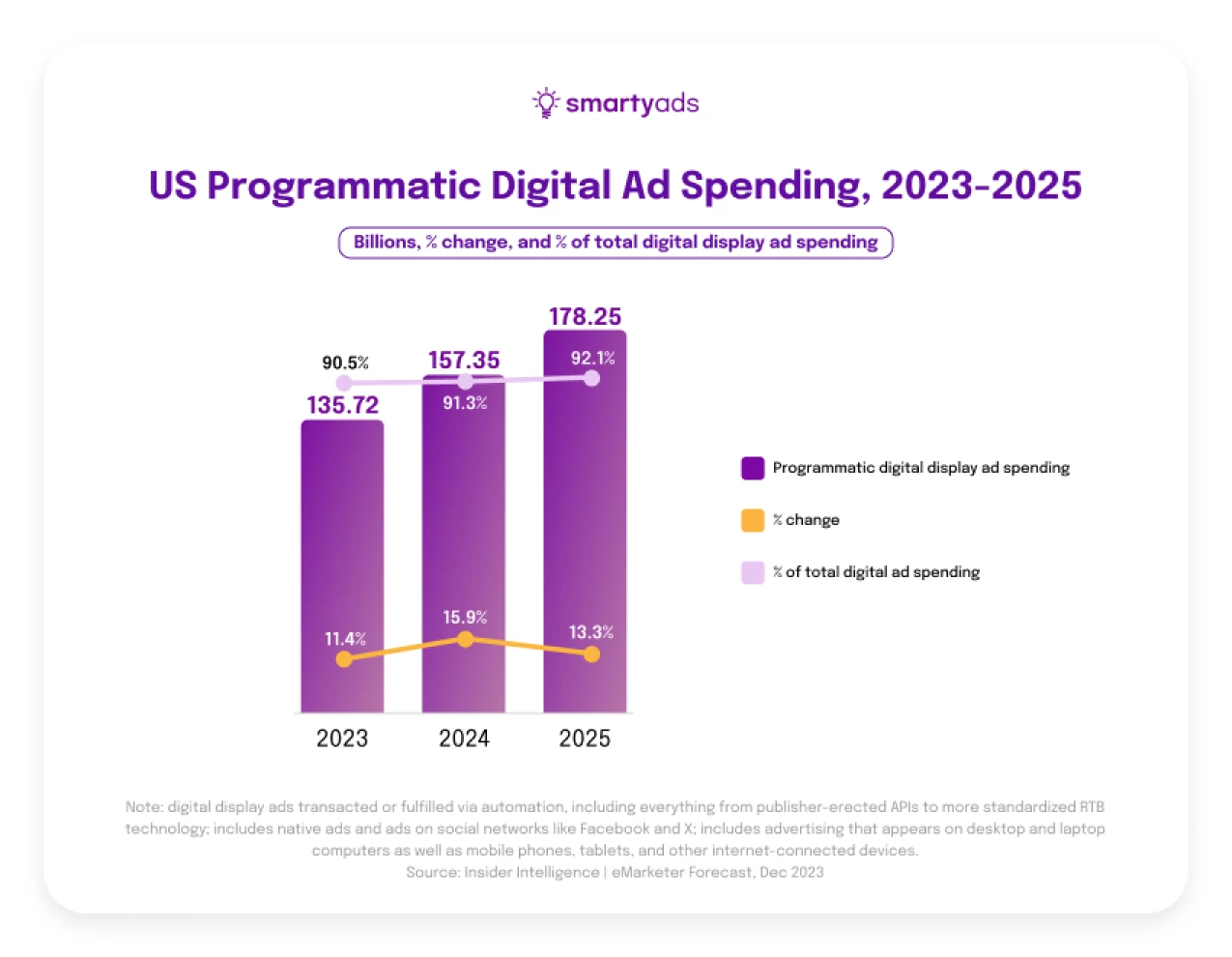
In particular, programmatic platforms can effectively place programmatic native ads campaigns across a variety of channels, including the most trendy and rapidly growing ones like:
- DOOH (Digital Out-of-Home): Native ads can appear on digital billboards, interactive screens, or other digital displays in public spaces. These ads are tailored to blend with their environment, delivering relevant content that feels natural within the context of the location. For example, an ad for a nearby restaurant can appear seamlessly within a city guide displayed on a digital screen in a shopping mall or at a bus stop. Spending on this channel is booming like never before, meaning that advertisers are willing to invest tremendous budgets in this promotion channel.
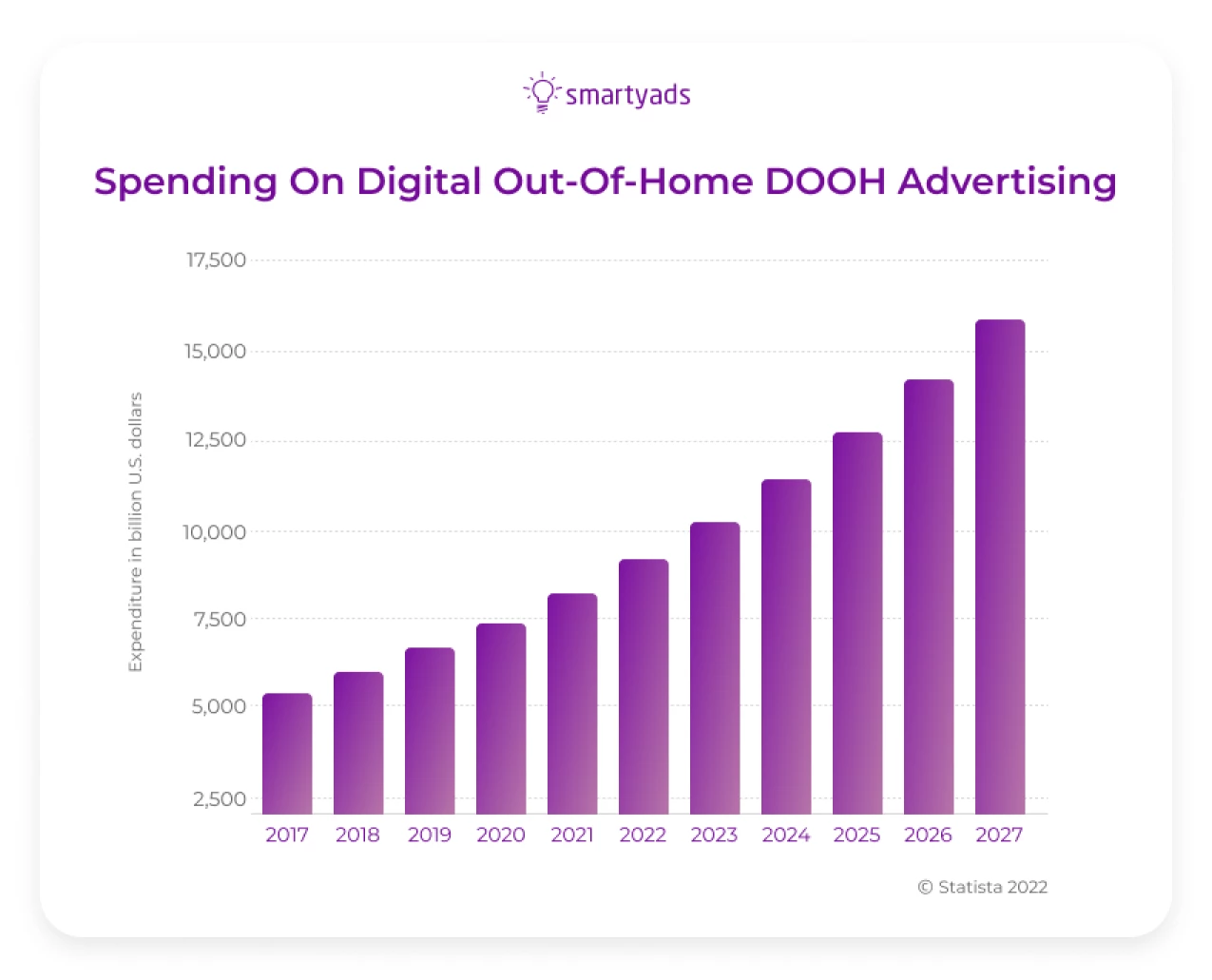
- CTV (Connected TV): Another trend in native advertising is CTV. It can take the form of in-stream video ads that appear during programming or as recommendations for shows, apps, or products that fit the user’s viewing habits. These ads are designed to look and feel like part of the regular content experience, minimizing disruption while increasing engagement. As we see on the screen below, the ad spending here is also growing; in particular, it is expected that by the end of 2025, it will reach a staggering $26,8 billion.
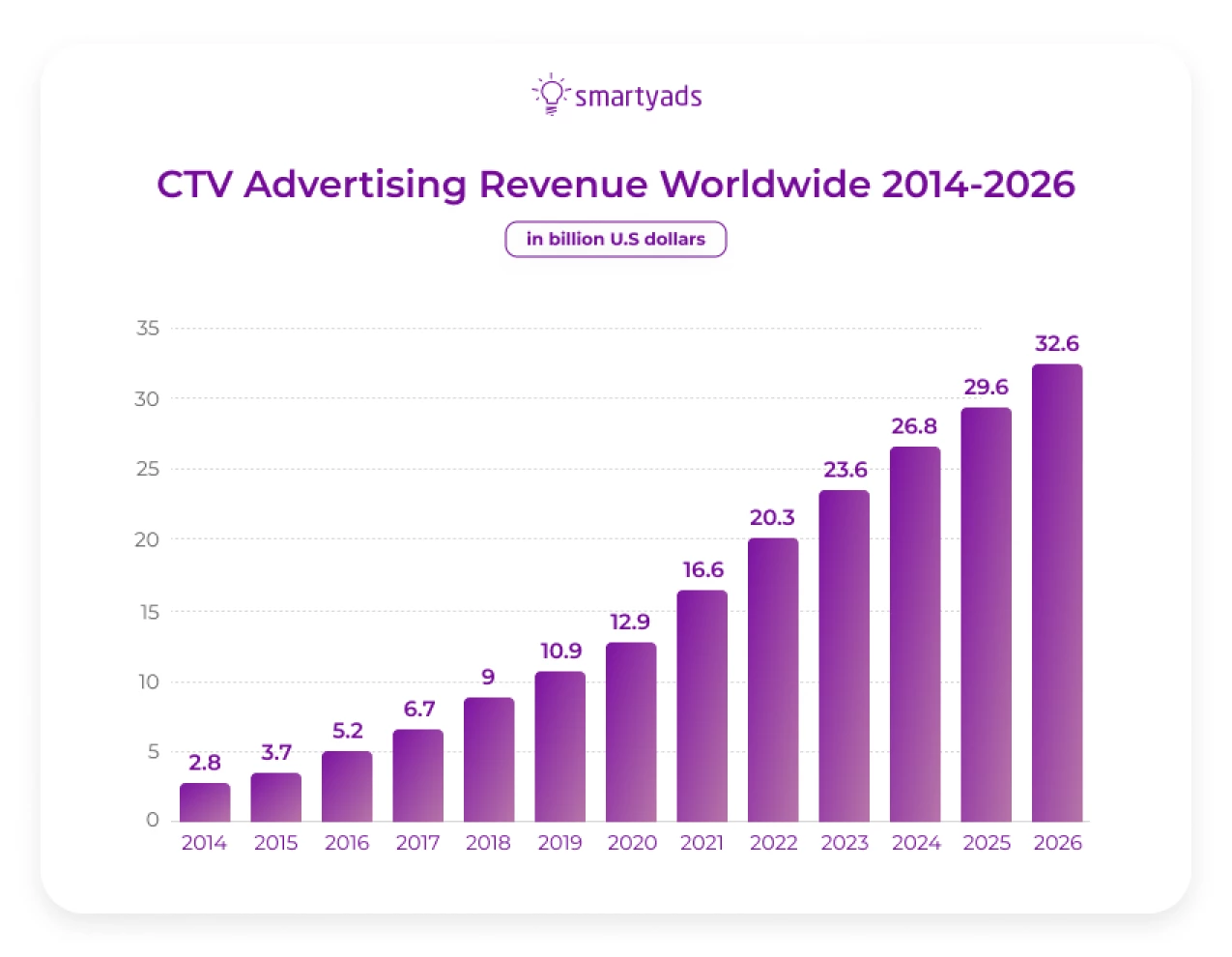
Around $180.00 billion of total ad spending is expected to come from mobile and applications since they are still the most popular, albeit already traditional, venue where the potential consumer sees content. With this, most people prefer to browse videos on their mobile phones, thanks to which, videos of all types will be an increasingly popular choice among advertisers as well. Now, let’s see how they combine with natives.
Videos of all types
It's worth pointing out that video ad formats will be rising very quickly. Ad spending in the video niche is expected to develop, reaching $45,576 in 2025. Overall, by 2027, it is expected to hit the bar of $229.80 billion globally. Stories, YouTube commercials, shorts, and more – there is a wide variety of video ads that brands can afford to make in 2025.
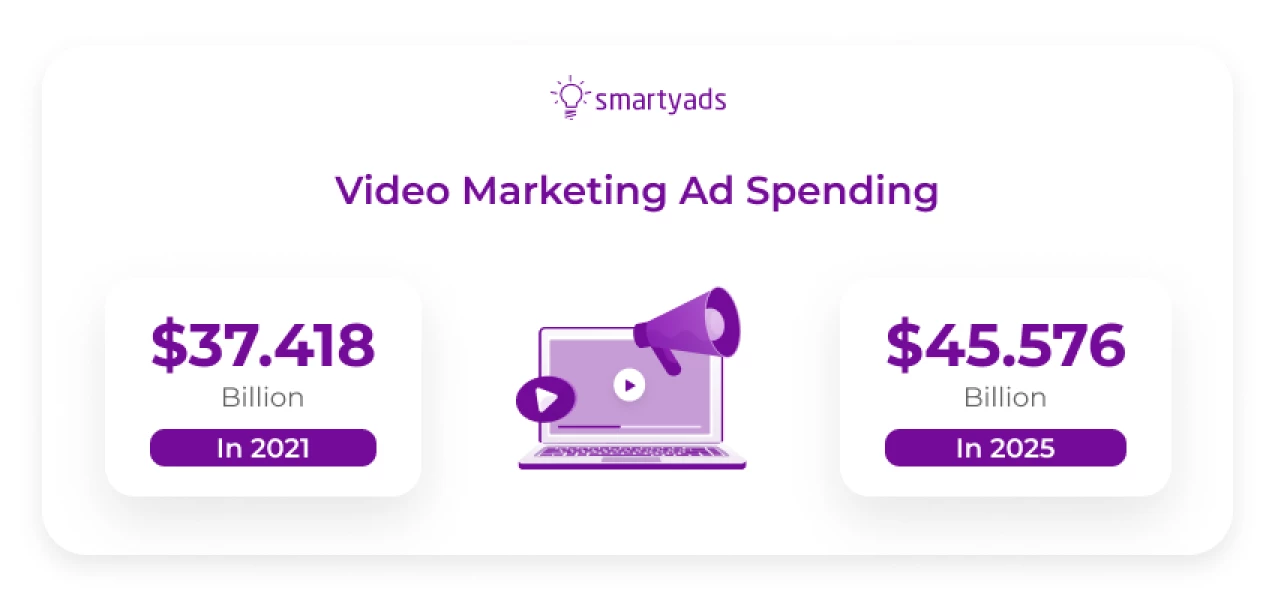
Although small brands can’t afford advertising in Hollywood blockbusters, they can consider options that are no less effective. In a YouTube blogger's video, viewers can spot an ad almost instantly—changes in tone, visuals, and the script give it away. However, you can make these placements feel more organic by presenting them as personal recommendations or weaving the brand into the blogger's daily routine. This strategy works just as well in podcasts.
For instance, in a review video, the ad can be integrated in a way that feels completely natural, like in this video.
If you are trying to hit several targets with your campaigns, choose native video ads in 2025, as they’ll help you achieve the following goals:
- Awareness: They can help attract new audiences and increase brand awareness. For example, you could create a video that tells the story of your company or illustrates how your product or service has solved a customer’s problem.
- Engagement: They can draw in new users and spark interest in your product or service. For instance, you might create a video that showcases your product in action or tells a success story from a customer who has benefited from your offering.
- Action: They encourage users to take specific actions, such as visiting your website, making a purchase, or sending a donation. For example, you could produce a video featuring a special offer, incentive, or discount.
Here you can see more brand advertising examples.
Integration of ML and AI
Many marketing processes that once required hours of work and the involvement of a team can now be completed in minutes, thanks to artificial intelligence tools. Smart marketing enables you to accomplish more in less time, and this time, it also applies to the huge trend in native ads—the application of AI and ML algorithms.
Now, let’s see how exactly smart algorithms can assist an advertiser here:
- Improving ad effectiveness: Creating a compelling image, crafting persuasive ad copy, and formulating a strong call to action is no easy task, just as it can be challenging to choose the most effective creative from several options. AI marketing streamlines this process by quickly identifying suitable solutions, leading to better results from advertising campaigns. How? Advertisers can opt for image and text generation tools to work with their campaigns. Alternatively, they can leverage programmatic platforms with such functionality. For example, SmartyAds DSP is launching a new feature called creative planners that streamlines work with creatives for those who don’t have a team of designers but still want to create impactful ad visuals.
- Increasing personalization: With its analytical capabilities, AI marketing helps tailor native ads to meet the individual needs and interests of each customer. This enhances the user experience, boosts loyalty and conversion rates, and improves customer retention.
- Enhancing advertising efficiency: Crafting an eye-catching image, developing persuasive ad copy, and creating a compelling call to action can be quite challenging, as is choosing the most effective creative from a range of options. AI tools enable advertisers to swiftly identify optimal solutions, leading to better outcomes for their advertising campaigns. Additionally, AI contributes to better campaign optimization, so your native campaigns perform better. How does it happen? Programmatic platforms leverage AI and ML to learn the patterns of successful bidding and then adjust the next campaigns to progressively enhance effectiveness or decrease CPM cost per campaign (discover more about Adaptive CPM).
Sponsored posts and publications
Sponsored posts are typically published on various informational resources and are labeled as "sponsored content." These articles provide valuable information written by an expert while subtly incorporating mentions of your brand or specific products.
For instance, an article on a parenting website might discuss the latest developmental toys and highlight that they are available for purchase at your store. This approach not only informs readers but also guides them toward your offerings.
To make the most of sponsored posts, consider the following tips:
- Choose the Right Platform: Select websites or blogs that align with your target audience. If you're selling children's products, parenting blogs or family-oriented sites would be ideal.
- Collaborate with Influencers: Partner with influencers or experts in your niche to write the content. Their authority can lend credibility to your brand and attract a larger audience.
- Focus on Value-Added Content: Ensure the post is informative and relevant to readers. Integrate insights, tips, or how-to guides to engage your audience while seamlessly incorporating your brand.
The important role of automation and Artificial Intelligence (AI) in native advertising
As we’ve already learned from the information above, AI can do a lot for native advertising campaigns. The most important thing is – it streamlines the process of creating and deploying ads by analyzing vast amounts of data. This allows advertisers to tailor their messages with remarkable precision, ensuring that the content resonates deeply with specific audiences.
Native advertising industry forecast
In the future of native advertising, AI and machine learning in online advertising will be at the forefront, enabling highly personalized ad targeting through data analysis and real-time optimization. Mobile-first strategies will also shape the landscape, with content tailored specifically for mobile in-game experiences and AR/VR applications. This will ensure ads are more relevant and engaging for users.
Video content will remain central, with a focus on authenticity and high-quality storytelling to build trust. The programmatic native will become more efficient with more optimization coming to the scene, while transparency in ad labeling will be key.
Contact us today to find out how we can help you with yield optimization and your performance marketing.

